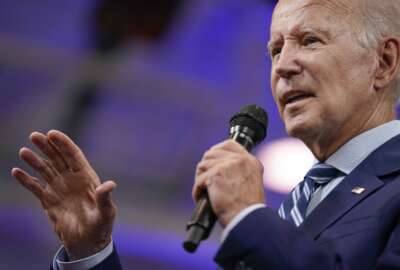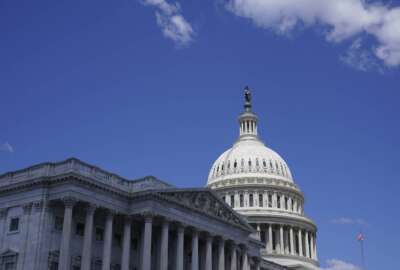
Here are the actual pay raises federal employees will see in 2023, depending on their location
President Joe Biden signed an executive order on Dec. 23 to make the average 4.6% federal pay raise official for civilian employees. But the exact raise you get...
This story was updated on Friday, Dec. 30, 2022 at 11:50 a.m.
President Joe Biden signed an executive order on Dec. 23, making the federal pay raise official for many civilian employees in 2023.
As anticipated, General Schedule employees will get an across-the-board pay raise of 4.1% in 2023, plus a 0.5% locality pay adjustment, totaling to an average 4.6% pay increase. The raise will take effect during the first pay period in January.
Biden had announced his plans for the 4.6% pay boost back in August. It’s a sizeable increase over the average 2.7% pay raise that most civilian employees saw in 2022. The executive order on Dec. 23 was the last step of the process to make the pay raise official ahead of the new year.
The 4.6% pay raise is an average, meaning not everyone will see that exact amount added to their paychecks next year. Depending on where they work in the country, some feds might see slightly higher bumps, while others might see slightly lower numbers.
The table below compiles the federal pay raises that General Schedule employees will actually get based on where they live. OPM published the full set of pay tables for the General Schedule on their website.
(Chart compiled by Federal News Network using data from the Office of Personnel Management)
For instance, General Schedule employees working in the Baltimore/Washington, D.C. metropolitan area will get a total raise of 4.86%, while employees in the Atlanta/Athens, Georgia, pay locality area will receive a pay increase of 4.43% in 2023.
Federal employees in the Seattle/Tacoma, Washington, pay locality area will get the highest raise in 2023, with an increase of 5.15%, according to data from OPM.
Employees in the Corpus Christi/Kingsville-Alice, Texas, pay locality will see the lowest pay raise of 4.35% next year. General Schedule employees in the “rest of U.S.” pay locality, the catch-all group for any employees outside the other 53 distinct pay localities, will get a raise of 4.37%.
Federal News Network has also compiled a report to help feds better understand locality pay and calculate their own raises.
The president’s pay agent tentatively approved four new pay localities, but civilian employees working in Fresno, California; Reno, Nevada; Rochester, New York; and Spokane, Washington won’t see any effects of that change until January 2024 at the earliest.
Locality pay originated with the Federal Employee Pay Comparability Act (FEPCA) of 1990. It was intended to make federal wages more competitive with the private sector, but no presidential administration after 1994 has fully implemented it, instead typically issuing alternative pay plans.
The President’s Pay Agent once again this year called for “major legislative reforms” to the federal pay system, saying that basing pay rates on geographical location leaves some specific occupations either underpaid or overpaid.
Although Congress has in past years occasionally legislated its own separate federal pay raise proposal, this year’s omnibus spending package made no mention of it, indicating a silent endorsement of the President’s pay plan.
The omnibus bill maintained a pay freeze for senior political appointees, in a move that has become standard in recent years. The freeze specifically covers the vice president, political appointees on the Executive Schedule, non-career ambassadors of the Foreign Service, non-career employees in the Senior Executive Service, as well as other senior political appointees at or above level IV of the Executive Schedule.
Copyright © 2024 Federal News Network. All rights reserved. This website is not intended for users located within the European Economic Area.
Drew Friedman is a workforce, pay and benefits reporter for Federal News Network.
Follow @dfriedmanWFED





